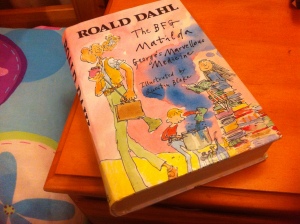As we’ve seen in previous posts, cancer is caused by some sort of error in the DNA of the cancer. Human DNA comes in 46 long strings called chromosomes and it sometimes breaks, but luckily the break is usually repaired. However, sometimes the repair process gets it wrong – for example two DNA ends are joined together that aren’t meant to be together.
This post is about a fairly recent discovery called chromothripsis. I’m going to describe it in terms of language, because after all, DNA is a language, and I think it will help picture what’s going on.
Anagrams are made by rearranging all the letters of a phrase or word to make another phrase or word, and it’s best if the new has a similar meaning to the old. Some examples are:
astronomer —-> moon starer
the meaning of life —-> the fine game of nil.
The rule for “perfect” anagrams is that all the letters are re-used in the new sentence.
Setting up printing originally involved arranging individual letters in a particular order on a plate. If the letters were dropped it wouldn’t be easy to get the letters back in the right order. If you had to put them back together in a hurry they’d be jumbled up and you wouldn’t get a meaningful anagram. In fact you’d probably have some missing letters left on the floor in a corner somewhere. Ok it’s starting to get complicated, but something similar can happen to DNA!

A printer inspecting a large form of type on a cylinder press. Each of the islands of text represents a single page, the darker blocks are images. The whole bed of type is printed on a single sheet of paper, which is then folded and cut to form many individual pages of a book.
At the beginning of 2011 Joshua Stephens and his colleagues published a paper that got a lot of cancer biologists excited. They noticed that the DNA of some cancers was very messed up. They even said that they’d found this in 10% of the cancers where they looked for it. Not only that, but they thought this had happened all at once by shattering of the chromosomes and rejoining of the broken pieces in a random and totally incorrect order.
Scientists love to make complicated words out of Greek roots. The Stephens paper called this process, this shattering and stitching back together of the chromosomes, “chromothripsis“. (An aside: The chromo- in chromothripsis is short for chromosome, or coloured thing. The authors say that thripsis means shattering into pieces.)
I had a couple of nice examples of chromothripsis acute myeloid leukaemia, but as someone who’s interested in chromosomes I wanted to talk about the chromosomes that were made by this whole chromothripsis process. There was no word for these new chromosomes so I came up with the term “anachromosome“. I like it because it has connotations of “new”, “remade”, and my favourite, “anagrams”. Although the anagram rule says all the letters have to be reused, there are apparently “imperfect” anagrams which can leave out some letters to make the anagram work. This is more like an anachromosome. Inevitably lots of bits of chromosome don’t make it into the anachromosome and so are lost. Such wholesale shuffling and loss of large sections of DNA will probably kill the cell in most cases, but just occasionally it will produce a cell that can outgrow its neighbours – and turn cancerous.

This shows how the chromosome shatters and rejoins in a random order. Note that the two ends of the chromosome and the centromere (represented by a circle) are preserved. These are essential features of a functioning linear chromosome. From MacKinnon and Campbell 2013. Cancer Genetics 206:238-251.
References:
MacKinnon RN and Campbell LJ 2013. Chromothripsis under the microscope: a cytogenetic perspective of two cases of AML with catastrophic chromosome rearrangement. Cancer Genetics 206:238-251
Stephens PJ et al. 2011. Massive Genomic Rearrangement Acquired in a Single Catastrophic Event during Cancer Development. Cell 144:27-40



